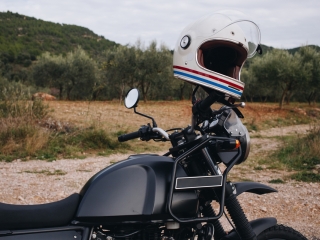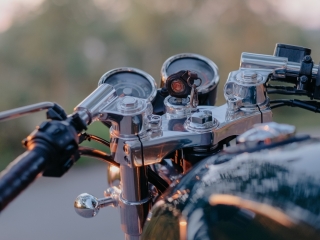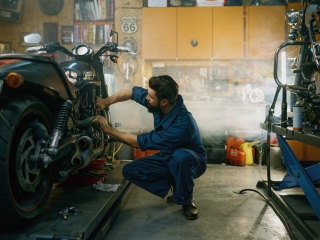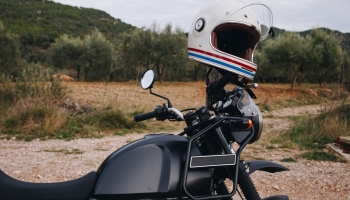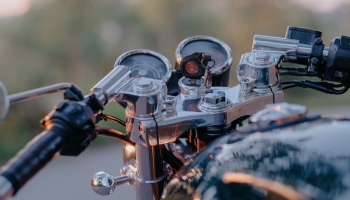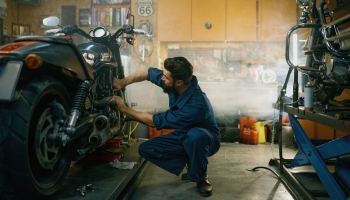Motorbike Trailers in Europe: Requirements, Laws and Safety
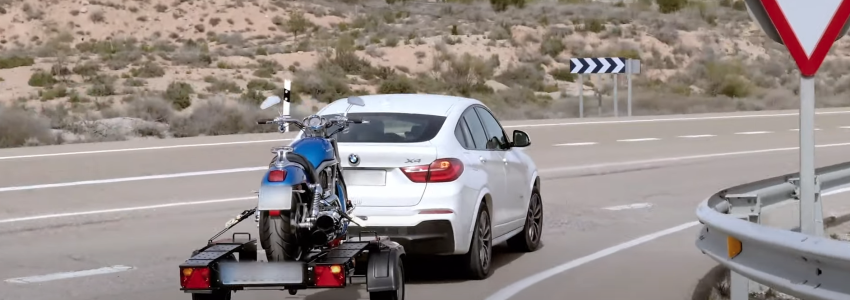
Traveling through Europe with a motorcycle on a trailer sounds great. Landscapes, adventure—but also paperwork, regulations, and details that can turn the experience into a legal and mechanical odyssey.
Because it’s not just about loading the bike, tightening a few straps, and hitting the road. The moment you attach a trailer, you enter a new European regulatory framework. A landscape where the rules change from one country to another, and ignorance is no excuse for fines.
In this article, we go over the various requirements needed to travel across the countries of Europe, avoiding any kind of trouble.
Trailer homologation:
Any trailer circulating on public roads in Europe must be approved in accordance with European Union regulations. Without this approval, circulation is not permitted, regardless of the purpose of the trip or the load being carried.
What does Europe require to consider a trailer legal?
- Manufacturer's identification plate, with approval number, maximum authorized mass (MAM), number of axles, etc.
- Regulation-compliant lighting system: position lights, brake lights, indicators, illuminated license plate, reflectors.
- Mandatory brake system if the trailer’s MAM exceeds 750 kg.
- Tow hitch compatibility with the towing vehicle, in both type and capacity.
Proper documentation:
If you're planning to travel through Europe, make sure you carry the following documents:
- Trailer registration certificate (if your country treats it as an independent vehicle).
- Technical sheet or European certificate of conformity.
- Insurance policy (in some countries, the car’s insurance covers the trailer; in others, it doesn’t).
- Driver’s license appropriate for the total mass of the setup.
What type of license do you need?
There’s no single answer here. The key is the total mass of the setup (vehicle + loaded trailer):
- With a B license, you can tow up to 750 kg without issue.
- If the trailer exceeds 750 kg but the total remains under 3,500 kg → you may need the B96.
- If the total exceeds 3,500 kg → you’ll need the BE.
Driving with a trailer in Europe:
Although there’s a common legal base in the EU, each country adds its nuances. And if you don’t know them, they can cost you fines.
Speed limits by country (light trailers)
- Spain: 90 km/h on highways, 80 km/h on secondary roads.
- France: 90 km/h on highways, 80 km/h outside built-up areas.
- Germany: 80 km/h, unless your trailer is certified for 100 km/h (Tempo-100-Zulassung).
- Italy: 80 km/h on highways, 70 km/h on regular roads.
- Netherlands: 90 km/h on highways, unless otherwise indicated.
Other requirements to keep in mind
- Mandatory extra mirrors if the trailer is wider than the towing vehicle.
- Trailer license plate: in some countries, it must be unique (e.g., red background), in others it may match the vehicle’s plate.
- Visible marking of any overhanging load (reflective panels, additional lights).
- Temporary restrictions on holidays or weekends (Germany, Austria, Italy).
What if you rent a trailer in another country?
More and more riders choose to rent a trailer at their destination to avoid transport hassles.
A good idea, but with nuances:
- Make sure it is approved for European circulation (CE plate, full lighting, proper documentation).
- Check the type of hitch and the diameter of the tow ball. Some countries use different couplings.
- Request the rental contract and insurance in paper format, not just by email. If something happens on the road, you’ll need the physical documents.

